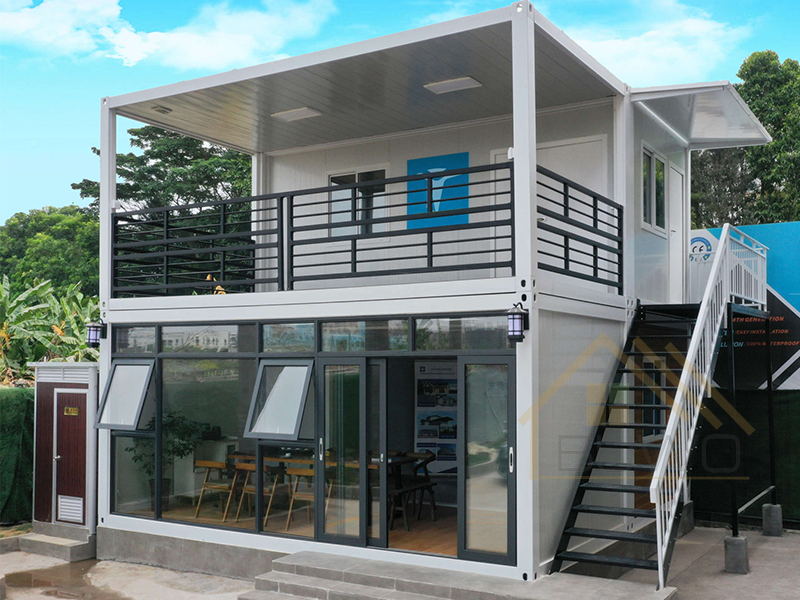
Container houses as a fast building, are mostly used in construction sites and field work areas. It may need to be placed in some areas of geological instability, on top of bare ground, near the workplaces. In different environments, the container houses foundation also needed to be built like brick and concrete buildings.
Therefore, when the geological conditions are different, the technical requirements for the container house foundation are also different.
Container hous foundation in Plain areas
In plain areas, where much suitable for arable, its land geology is stable. However, in the rainy season, there will be a lot of rain and river water pouring into the land. So, when placing container buildings in these areas, a shallow foundation tank should be built first. We can choose concrete, stone, etc. as the main foundation material.
Container house foundation in the wild
For outdoor workers, the workplace is mostly in the wild, maybe on the mountain, or deserts, like the mineral mining industry, pipe laying companies, etc. Although the geology is relatively stable sometimes, but it still may be move more. So, it needs to dig a deeper foundation tank. For the foundation material we can choose concrete, stone plus concrete or reinforced concrete, so that the whole base can be connected into one to get the best stability. In case of pure stone hills, there is no need to excavate foundation trench, just make a unified horizontal line of base in the above ground part.
Foundation Solutions for container house with two or three layers
Cast-in-place concrete foundation
Cast-in-place concrete foundation includes two types: unreinforced concrete and rigid reinforced concrete. Under the concrete slab, it needs to lay a 10 ~ 20 cm thick grass-roots level. We can use the mud knot gravel, graded gravel, limestone, industrial waste, cement and other materials as the grass-roots structure.
The advantages of this kind of container house foundation are that it is with high strength, water stability and thermal stability; And it has a smooth surface, good wear resistance, oil corrosion resistance and high temperature resistance. Besides that, it will not turn to deformation even under strong load.
However, it also has disadvantages:
It has a high requirement for the road, uneven settlement of the road will cause the surface layer to break; constructed longitudinal and transverse temperature joints, the formation of inherent weakness in the pavement. And it requires a large amount of cement and a certain amount of steel, which means high construction costs.
Asphalt type foundation
This kind of pavement cost is low and easy to construct. It has a smooth and flat surface without gaps, very easy to clean, and much more adaptable for the uneven settlement of the soil base.
But its disadvantage is that, if in a very large pressure load, the container house’s joint corners are at a very high contact stress. But the long-term load would produce large partial deformation, which will lead to serious dents. These indentations in cold areas are susceptible to frost attack and damage, and even damage to the bedding layer. And in summer, when the temperature gets very high, the surface is easy to soften, the effective stiffness or strength of the asphalt material will be reduced. Therefore, when using this type of container house foundation, we must pay attention to the choice of asphalt, mechanical operation mode of the container house stacking, etc.
Precast concrete blocks
Concrete block foundation is made of high-strength cement concrete blocks. Because of the excellent economic price and durability, using the concrete block as container house foundation has get rapidly popularity in the past two decades in the world.

